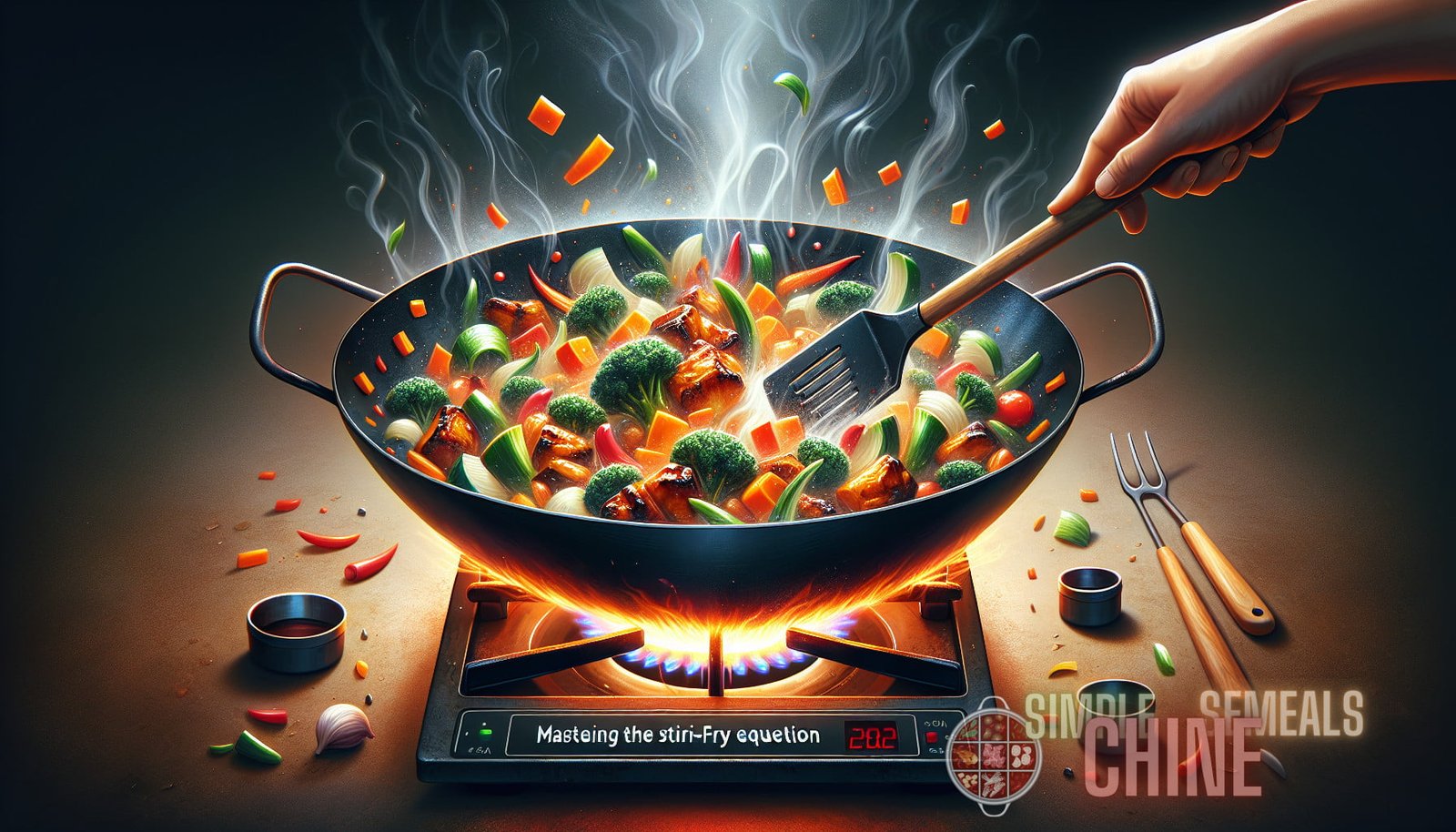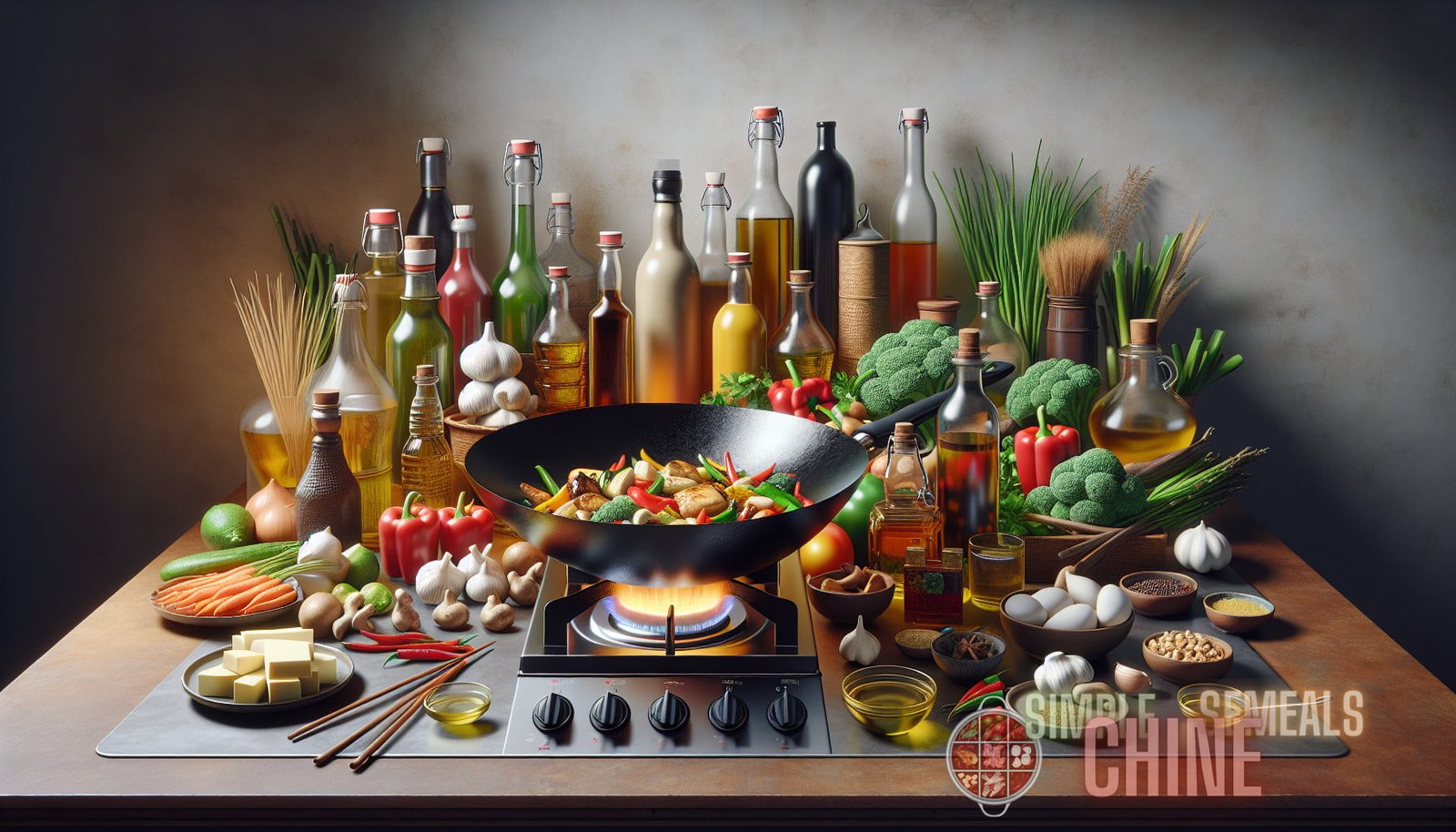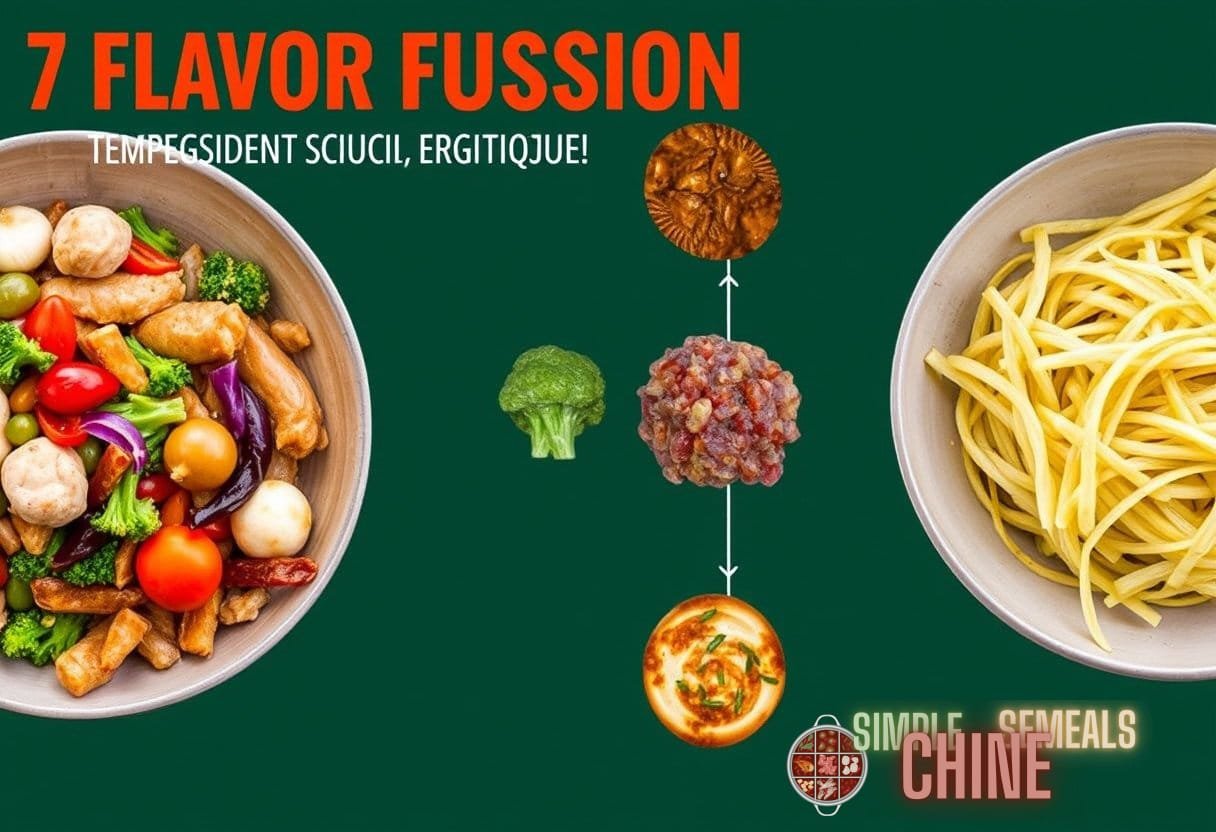Introduction
Stir-frying is a popular cooking technique that originated in China and has become a beloved culinary method worldwide. It involves quickly frying ingredients in a hot pan or wok, combining them with a flavorful sauce or seasoning, and serving the dish immediately. Stir-fry allows you to create a meal that is both nutritious and delicious.
In this guide, we will explore the art of stir-frying and uncover the secrets to stir-fry mastery. We will delve into the alchemy of heat, texture, and flavor that makes a good stir-fry, and provide you with the knowledge and techniques to create your own delicious stir-fry dishes. Whether you’re a seasoned chef or a beginner in the kitchen, this guide will unlock the secrets to perfect stir-fry techniques and help you elevate your cooking to the next level.
The Basics: Essential Tools and Ingredients
Before we dive into the intricacies of stir-fry mastery, let’s start with the basics. To create a great stir-fry, you need the right tools and ingredients. Here are the essentials:
1. Wok or Skillet
The wok is the traditional choice for stir-frying, thanks to its shape and design that allows for high heat distribution and even cooking. However, if you don’t have a wok, a large skillet or frying pan can also be used.
2. Heat Source
Stir-frying requires high heat to achieve that signature charred flavor and crisp texture. Gas stoves are ideal for stir-frying, as they provide intense heat. Electric stoves can also be used, but they may not reach the same level of heat.
3. Oil
The choice of oil for stir-frying is crucial. A high smoke point oil, such as peanut oil, vegetable oil, or canola oil, is recommended. These oils can withstand high temperatures without burning and impart minimal flavor to the dish, allowing the other ingredients to shine.
4. Protein
Protein is an essential component of a stir-fry. Common choices include chicken, beef, pork, shrimp, tofu, or a combination of these. Choose lean cuts of meat and firm tofu for best results.
5. Vegetables
Vegetables add freshness, texture, and color to a stir-fry. Some popular choices include bell peppers, broccoli, carrots, snap peas, mushrooms, and onions. Use a variety of vegetables to create a well-balanced stir-fry.
6. Aromatics and Seasonings
Aromatics like garlic, ginger, and scallions are often used to add depth and flavor to stir-fries. Seasonings like soy sauce, oyster sauce, hoisin sauce, and Chinese rice wine are commonly used to enhance the taste of the dish. Don’t be afraid to experiment with different combinations of aromatics and seasonings to create your own unique flavors.
The Stir-Fry Equation: Heat, Texture, and Flavor
Mastering the art of stir-fry involves understanding the relationship between heat, texture, and flavor. These three elements work together to create a well-balanced dish that is both visually appealing and delicious.
1. Heat: The Magic of High Heat
One of the defining characteristics of stir-frying is the use of high heat. The intense heat allows for quick cooking and imparts a smoky, charred flavor to the ingredients. It also helps to retain the texture and color of the vegetables, keeping them crisp and vibrant.

When stir-frying, it’s important to preheat your pan or wok until it’s smoking hot. This ensures that the ingredients sear and cook quickly without becoming soggy or overcooked. The high heat also helps to develop a delicious caramelization on the surface of the proteins and vegetables, adding depth of flavor to the dish.
Remember to work quickly when stir-frying. Keep all your ingredients prepped and ready to go, and add them to the pan in quick succession. Stir-frying is a fast cooking method, and taking too long to add ingredients can result in uneven cooking and loss of texture.
2. Texture: The Balance of Crunch and Tenderness
Texture is an important factor in stir-fries. The combination of crisp, crunchy vegetables and tender, juicy proteins creates a satisfying eating experience. Achieving the right balance of texture requires careful attention to cooking times and the order in which ingredients are added to the pan.
To ensure even cooking, it’s important to cut your ingredients into uniform sizes. This allows them to cook at the same rate and ensures that you don’t end up with some vegetables that are undercooked and others that are overcooked.
When stir-frying, start with ingredients that take the longest to cook, such as proteins, and add them to the pan first. Cook them until they are almost done, and then set them aside. Next, add the vegetables, starting with the ones that require the most cooking time. Add the more delicate vegetables towards the end to avoid overcooking them.
Finally, create a sauce or seasoning mixture to coat the stir-fry. This will help to bind the ingredients together and add flavor. Once the sauce is added, cook for a short time to allow the flavors to meld and the sauce to thicken slightly.
3. Flavor: Balancing Savory, Sweet, Sour, and Spicy
The flavor profile of a stir-fry is what sets it apart from other cooking methods. A well-balanced stir-fry should have a combination of savory, sweet, sour, and spicy flavors, all working together to create a harmonious taste experience.
Soy sauce is a classic ingredient in stir-fries, providing a salty and savory flavor. Oyster sauce adds a rich, umami taste, while hoisin sauce provides a touch of sweetness. To add a sour or tangy element to your stir-fry, consider using rice vinegar or lime juice. For heat and spiciness, chili peppers or chili sauce can be used.
Experiment with different combinations of flavors to find the one that suits your taste preferences. Remember to start with small amounts of seasoning and taste as you go. You can always add more, but it’s difficult to remove excess seasoning once it’s been added.
Stir-Fry Techniques: Tips and Tricks
Now that we’ve covered the basics and the elements of a stir-fry, let’s explore some essential techniques to help you unlock stir-fry mastery. These tips and tricks will take your stir-fry game to the next level:
1. Prepare and Organize Your Ingredients
Stir-frying is a fast-paced cooking method, so it’s important to have all your ingredients prepped and organized before you start cooking. This includes washing and cutting the vegetables, slicing the proteins into bite-sized pieces, and measuring out the seasonings and sauces.
Internal Link: To learn more about preparing stir-fry ingredients, check out our article on how to unlock the secrets to perfect stir-fry techniques and recipes.
2. Use High Heat and a Large Pan
As mentioned earlier, stir-frying requires high heat to achieve that signature char and crispness. Make sure your pan or wok is screaming hot before adding the ingredients. It’s also important to use a large enough pan or wok to allow for even cooking and proper heat distribution.
3. Cook in Small Batches
Overcrowding the pan with too many ingredients can result in a soggy stir-fry, as the ingredients will release too much moisture. To avoid this, cook in small batches. This allows the ingredients to sear and cook quickly, maintaining their texture and flavor.
4. Keep the Ingredients Moving

Stir-frying gets its name from the constant stirring and tossing of the ingredients in the pan. This ensures that they cook evenly and allows for quick cooking. Use a spatula or a pair of tongs to continuously move the ingredients around the pan, flipping and tossing them to prevent sticking and ensure even heat distribution.
5. Cook Proteins First, Vegetables Second
As mentioned earlier, proteins take longer to cook than vegetables. To ensure that your proteins are cooked to perfection, add them to the pan first and cook until almost done. Remove them from the pan and set aside before adding the vegetables. This prevents the proteins from becoming overcooked and ensures that the vegetables retain their vibrant color and crispness.
6. Add the Sauce at the End
The sauce or seasoning mixture should be added towards the end of the cooking process. This allows the flavors to meld and the sauce to thicken slightly. Adding the sauce too early can result in a watery stir-fry with diluted flavors.
Stir-Fry FAQs
In this section, we will answer some commonly asked questions about stir-frying:
1. Can I Use Olive Oil for Stir-Frying?
Olive oil has a lower smoke point compared to oils like peanut or canola oil, which makes it less suitable for stir-frying at high temperatures. It is best to use oils with a high smoke point to prevent burning and maintain the flavor of the ingredients.
2. Can I Use Frozen Vegetables in Stir-Fry?
Yes, you can use frozen vegetables in stir-fry. However, keep in mind that frozen vegetables may release more moisture during cooking, which can affect the texture of the stir-fry. To prevent this, make sure to thaw the vegetables and pat them dry before adding them to the pan.
3. Can I Make Stir-Fry in Advance?
Stir-fries are best enjoyed immediately after cooking, as they tend to lose their crispness and texture over time. However, you can prepare some of the ingredients in advance, such as cutting the vegetables and marinating the proteins. This can help save time when it comes to stir-frying.
4. Can I Reheat Leftover Stir-Fry?
While it’s best to enjoy stir-fry fresh, you can certainly reheat leftovers. To prevent the stir-fry from becoming soggy, reheat it in a hot pan or wok over high heat. This will help to re-crisp the vegetables and proteins.
Conclusion
Stir-fry mastery is achieved through the understanding of the stir-fry equation: heat, texture, and flavor. By harnessing the power of high heat, balancing the textures of crisp and tender, and creating a flavorful combination of savory, sweet, sour, and spicy, you can create stir-fry dishes that are both visually stunning and delicious.
Remember to use the right tools and ingredients, prep and organize your ingredients, and follow essential stir-fry techniques to unlock the secrets of stir-fry mastery. With practice and experimentation, you will be able to create your own unique stir-fry recipes that will impress your family and friends.
Now that you have the knowledge and techniques to decipher the stir-fry equation, it’s time to get into the kitchen and start stir-frying! Happy cooking!
External Link:
For more in-depth information on stir-frying, you can visit the Wikipedia page on stir-frying.



